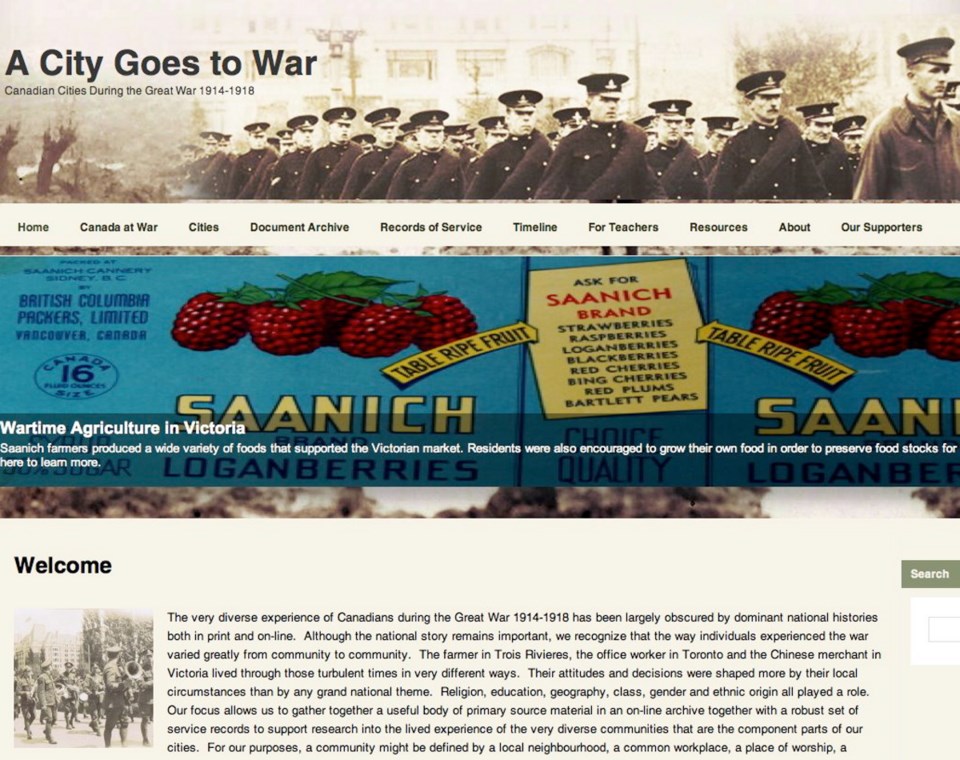As the 100th anniversary of the start of the First World War approaches, historians at the University of Victoria have devised a way to put people in touch with the Great War.
UVic history students and faculty launched a web-based project Monday. Titled A City Goes to War, it offers a database of photos, documents, letters, and 6,000 service records of Victorians who served in the conflict to show how the city changed during the war, which spanned 1914 to 1918.
John Lutz, a UVic associate professor of history who oversaw the website’s creation, said it gives viewers a chance to see the war’s effects at home.
For example, Lutz said details can be gleaned showing a trend in women’s clothing toward a more military-influenced style.
He said the website also offers learning platforms for high school students studying the First World War, and raw data for others doing research.
Also, in conjunction with University of Victoria Libraries, the 1910-1920 archives of The Daily Colonist, forerunner of the Times Colonist, will be posted online so people can study the war years through news stories. That archive will be available beginning Dec. 11, marking the 155th anniversary of the newspaper.
The aim is to show the pivotal nature of the conflict, Lutz said.
“Our worldview changed in World War I,” he said in an interview. “A lot of people think it was the beginning of the modern age.
“Progress seemed to be interrupted by World War I,” he said. “Things seemed to be getting better and better and better, then all of a sudden we used all this modern technology to plunge ourselves into the worst conflict the world had ever seen.”
Kirsten Hurworth, one of the UVic students who worked on the project, said women’s organizations, such as the Imperial Order of the Daughters of the Empire, were large in Victoria. It put together care packages for men at the front, rolled bandages and raised money for war-related causes.
Hurworth, whose main area of study is the military, said the local militia was always a big part of the social scene in Victoria but became a modern force during the war.
She noted Sir Arthur Currie, whose military experience began in Victoria with the militia, rose up to command the entire Canadian corps.
“This city has an extremely strong and rich military history and a lot of people don’t realize that,” Hurworth said. “So we are trying to give people a chance to see it by putting it on the Internet.”
• A City Goes to War website: acitygoestowar.ca
• Archive of stories from The Daily Colonist and The British Colonist: britishcolonist.ca



